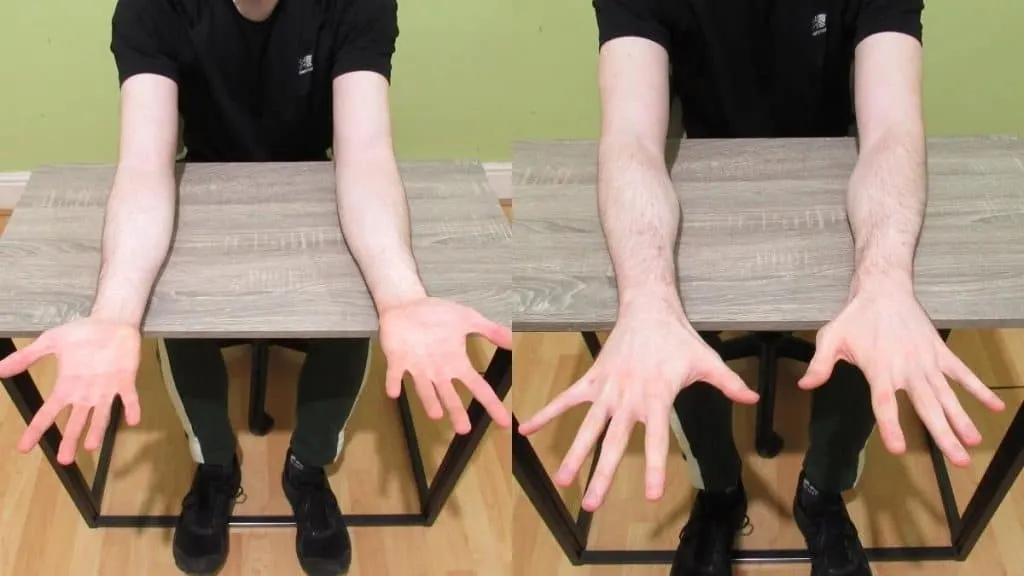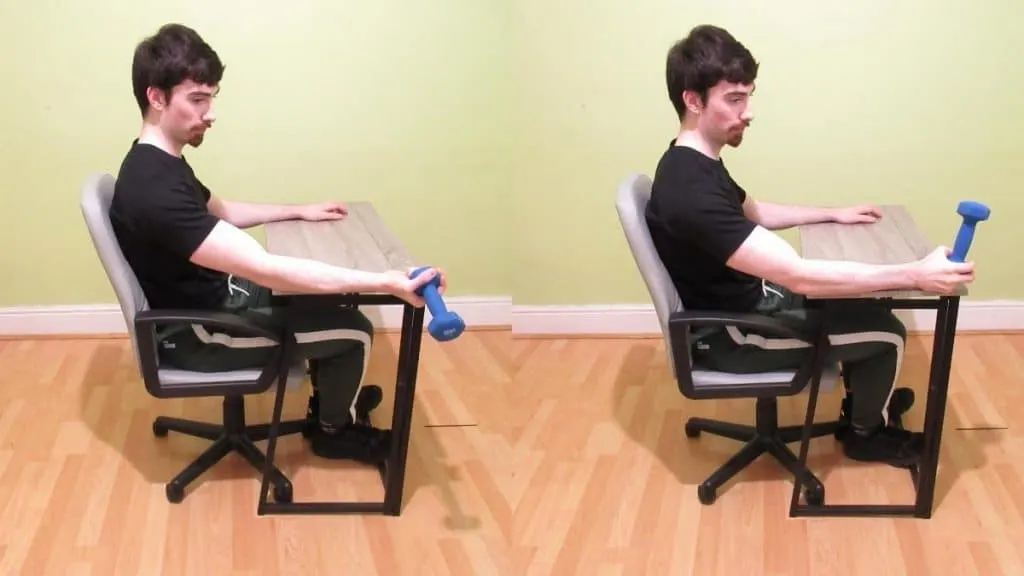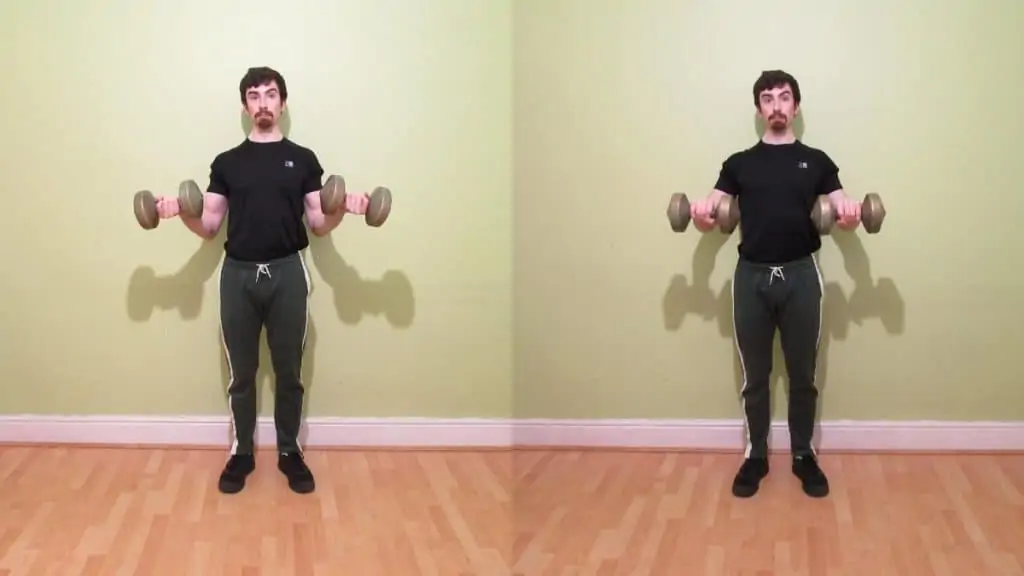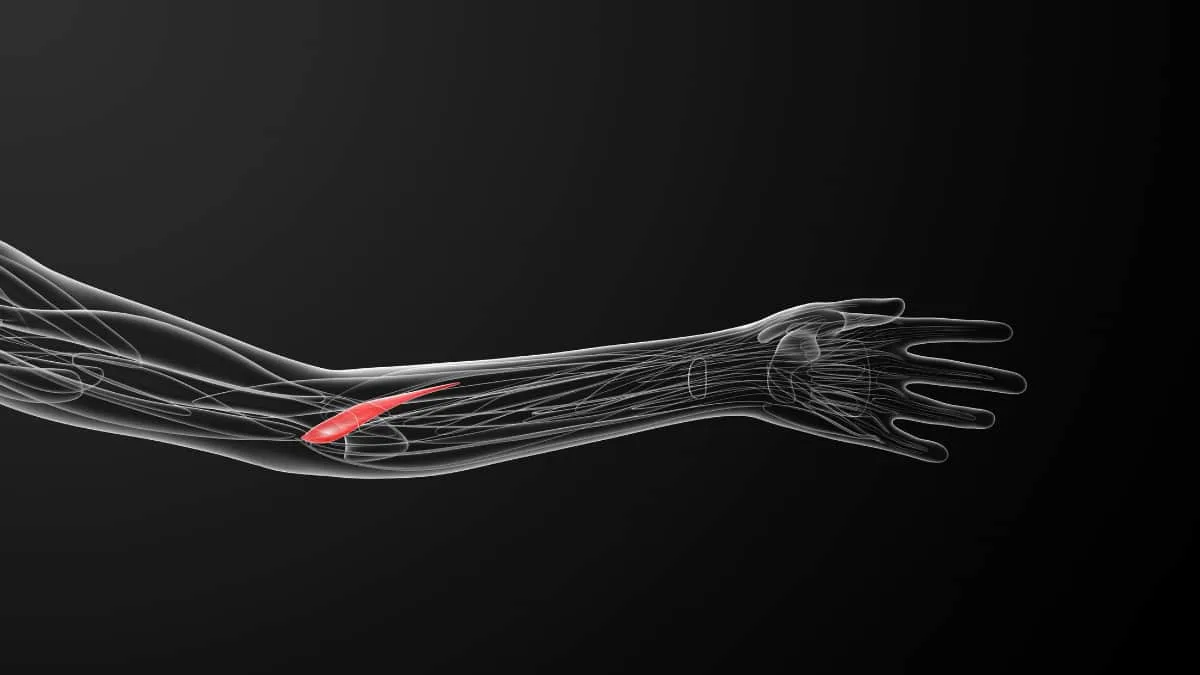There are many different forearm muscles in the human body. However, when the median nerve at the elbow becomes compressed, some people can experience issues with it. This pain is commonly called pronator teres syndrome.
In this guide, I’m going to focus on the various exercises that you can do to strengthen your pronator teres muscle in order to make it more resistant to future stressors. I’ll also share my favorite pronator teres stretch with you so that you can relieve some of the built-up tension in this vital muscle.
Related exercises/stretches
- Anconeus stretch
- Brachioradialis exercises
- Extensor carpi radialis brevis workout
- Extensor carpi radialis longus workout
- Exercises for the extensor carpi ulnaris
- Extensor digitorum exercises
- Extensor pollicis brevis drills
Pronator teres anatomy
Located in the anterior compartment of the forearm, the pronator teres is a two-headed muscle that’s part of the superficial flexors of the forearm, which are collectively responsible for wrist flexion. [1]
Out of the 5 superficial flexors, it’s the pronator teres which is the most lateral. [2] But let’s take a quick look at the origins and insertions to better understand its unique anatomy.
The pronator teres has a humeral head, which is the most superficial, and an ulnar head, which originates from the coronoid process and is thus the deeper head.
Bedsides assisting in wrist flexion, the main function of the pronator teres is forearm pronation, which is a critical movement that allows us to perform a variety of crucial tasks, such as tying.
Let’s get into the specific pronator teres strengthening exercises to prevent this often overlooked muscle from weakening.
Pronator teres exercises
I’ve split these pronator teres syndrome exercises into different categories so that people of all levels of advancement can strengthen their lower arms without doing too much too soon.
1. Basic forearm pronation

While this exercise doesn’t apply much resistance directly to the pronator teres, it does train its main function, which, of course, is wrist/forearm pronation. If this variation is too easy, then you can always increase the difficulty by wearing wrist weights (tongue twister, I know).
- Sit upright in a chair or stand up straight with good, tall posture.
- Bend your elbows to 90 degrees so that your palms are out in front of you and are facing up.
- Then, turn your palms into a pronated position (I.e., downwards) by slowly rotating your wrists.
- Hold the pronated position for a second, and then rotate your hands back into the supinated position.
- Repeat for 10-12 reps and try and focus on rotating your wrists carefully rather than just shaking your hands.
2. Pronator teres rotation

Before you begin this exercise, grab a dumbbell handle and load a light weight onto one side only. If you don’t have access to this kind of equipment, then any grippable object with an uneven weight distribution (where one end is heavier than the other) will do just fine.
- Sit down and place your forearm on your thigh so that your palm is facing up.
- Grab the light end of the dumbbell with one hand.
- While keeping your shoulders completely still, rotate the dumbbell from a supinated palm position to a neutral palm position.
- Repeat this motion for 10-15 reps.
Also note that, unlike some other pronator teres syndrome exercises, you can also get great results from doing this drill isometrically. So rather than moving from a supinated position to a neutral position, you can just hold the dumbbell in a static position.
This is because isometric contractions are easier than dynamic contractions—the latter being where you repeatedly stretch and contract the muscle. If you have a particularly painful injury, then it’s always best to start with the easier, rehab-focused movements before graduating to the more potent strengthening exercises.
3. Dumbbell forearm pronation

This exercise is excellent to do before the pronator teres stretch that I’m about to show you because it requires more muscle strength, meaning that it’s best done when you’re at your freshest.
- Take 2 lightweight dumbbells and hold them in a palm-up, supinated position.
- While keeping your shoulders stationary, rotate your wrists until your palms are facing down.
- Hold the new pronated position for a brief moment, and then turn your wrists so that your palms are once again facing up.
Related posts
- Flexor carpi radialis workout
- Flexor carpi ulnaris stretching exercises
- Flexor digitorum profundus workouts
- Exercises for the flexor digitorum superficialis
- Exercise for the flexor pollicis longus
- Palmaris longus stretch
- Pronator quadratus stretches
4. FlexBar forearm rotation
You can use any long, semi-lightweight object for this exercise. The FlexBar is a great example of this kind of device, and so are those empty aerobic barbells that you often find in fitness class studios at the gym.
- Grab the bar with one hand in a pronated position, and then allow it to rotate your hand into a neutral position.
- Hold this position for a split second.
- Then, turn the bar towards your body so that your hand is once again in a pronated position.
- Repeat for 12-15 reps before moving onto the other hand.
5. Pronator teres stretch
This pronator teres stretch is great if you don’t yet have the strength to do some of the weighted pronator teres exercises that I showed you. The key to this particular stretch is to only take it as far as your muscles are comfortable with.
- Raise your arm out in front of you and maintain a slight bend in your elbow.
- Rotate your hand into a palms up, supinated position.
- Actively supinate your wrist as far as you can while maintaining this outstretched arm positioning.
- Intensify the stretch by using your other arm to increase the supination by turning it away from your body.
- Hold this position for 10-30 seconds and repeat for an additional set. Be sure to also repeat the process for your other arm.
Conclusion: What are the most effective pronator teres exercises to stretch the muscle?
Whether you have pronator teres pain after a workout or just want to find a good pronator teres stretch, the exercises that I just showed you can help tremendously if you perform them consistently. [3]
I always advise starting off with simple, unweighted wrist pronations before moving onto any exercises that utilize external resistance. This is because if even weightless exercises cause you pain, then you’ll know that you’re not yet ready to strengthen your pronator teres via weighted exercises.
If, however, you can do the weightless pronations pain-free, then I’m a big fan of either the dumbbell rotation or the bar rotation because both exercises really teach you to control the weight using your pronator teres and its surrounding muscles.
Of course, starting and ending each workout with the above pronator teres stretch is a great way to release any tightness from the muscle. It’s also useful for assessing your mobility because it’ll show you far you’re able to comfortably supinate your forearm.
References
- Grujičić, R. (2020, October 29). Pronator teres muscle. Kenhub. https://www.kenhub.com/en/library/anatomy/pronator-teres-muscle
- Pronator Teres. (n.d.). Physiopedia. https://www.physio-pedia.com/Pronator_Teres
- Dididze, M. (2020, July 8). Pronator Teres Syndrome – StatPearls – NCBI Bookshelf. The National Center for Biotechnology Information. https://www.ncbi.nlm.nih.gov/books/NBK526090/

